
JS Chōkai (DDG-176) is a Kongō-class guided missile destroyer in the Japan Maritime Self-Defense Force (JMSDF). Chōkai was named after Mount Chōkai. She was laid down by IHI Corporation in Tokyo on 29 May 1995 and was launched on 27 August 1996. Commissioning happened on March 20, 1998.

JS Takanami (DD-110) (たかなみ) is the lead vessel of the Takanami-class destroyers of the Japan Maritime Self-Defense Force (JMSDF).

JS Ōnami (DD-111) is the second vessel of the Takanami-class destroyers of the Japan Maritime Self-Defense Force (JMSDF).

JS Makinami (まきなみ) is the third vessel of the Takanami class destroyers of the Japan Maritime Self-Defense Force (JMSDF).

JS Sazanami (さざなみ) is the fourth vessel of the Takanami class destroyers of the Japan Maritime Self-Defense Force (JMSDF).
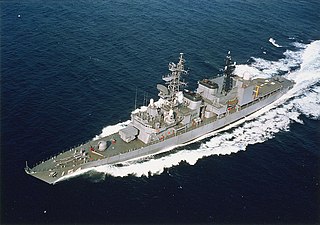
JS Amagiri (DD-154) is an Asagiri-class destroyer of the Japan Maritime Self-Defense Force. Amagiri is currently in active service, homeported in Maizuru, Kyoto, Japan.
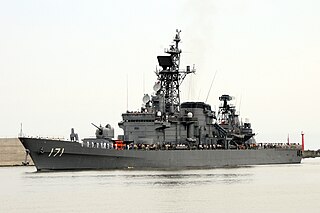
JS Hatakaze (DDG-171) is a Hatakaze-class guided missile destroyer built for the Japan Maritime Self-Defense Force (JMSDF). Hatakaze was the first vessel completed of her class. She was the first JMSDF vessel to use gas turbine propulsion.

JS Akizuki (DD-115) is the lead ship of Akizuki-class destroyers. She was commissioned on 14 March 2012.
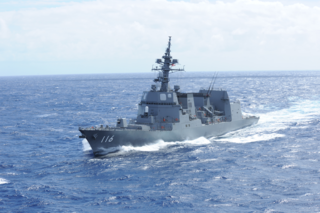
JS Teruzuki (DD-116) is the second ship of Akizuki-class destroyers. She was commissioned on 7 March 2013.

JS Suzutsuki (DD-117) is the third ship of Akizuki-class destroyers. She was commissioned on 12 March 2014.

JS Harusame (DD-102) is the second ship of Murasame-class destroyers. She was commissioned on 24 March 1997.

JS Ariake (DD-109) (ありあけ) is the ninth ship of Murasame-class destroyers. She was commissioned on 6 March 2002.
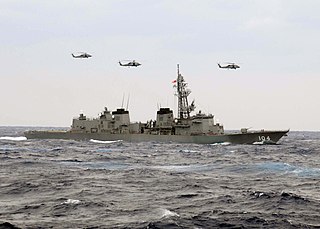
JS Kirisame (DD-104) is the fourth ship of Murasame-class destroyers of the Japan Maritime Self-Defense Force. She was commissioned on 18 March 1999.

JS Samidare (DD-106) is the sixth ship of the Murasame-class destroyer of the Japan Maritime Self-Defense Force (JMSDF). She was commissioned on 21 March 2000.

JS Asagiri (DD-151) is an Asagiri-class destroyer of the Japan Maritime Self-Defense Force.

JS Umigiri (DD-158) is an Asagiri-class destroyer of the Japan Maritime Self-Defense Force.

JS Yūgiri (DD-153) is an Asagiri-class destroyer of the Japan Maritime Self-Defense Force.
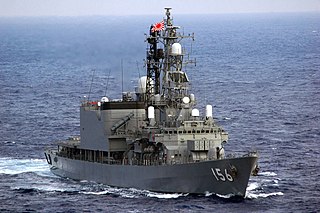
JS Setogiri (DD-156) is an Asagiri-class destroyer of the Japan Maritime Self-Defense Force.

JS Hamagiri (DD-155) is an Asagiri-class destroyer of the Japan Maritime Self-Defense Force.

JS Uraga (MST-463) is the lead ship of the Uraga-class mine countermeasure vessels.
























